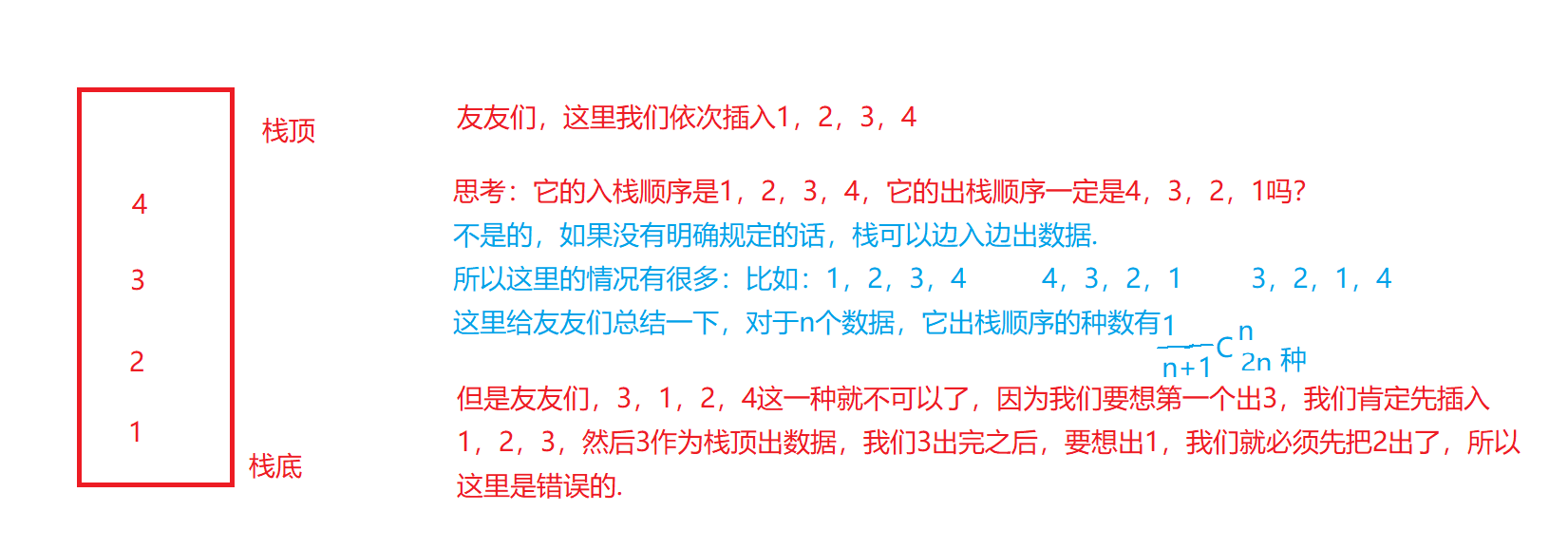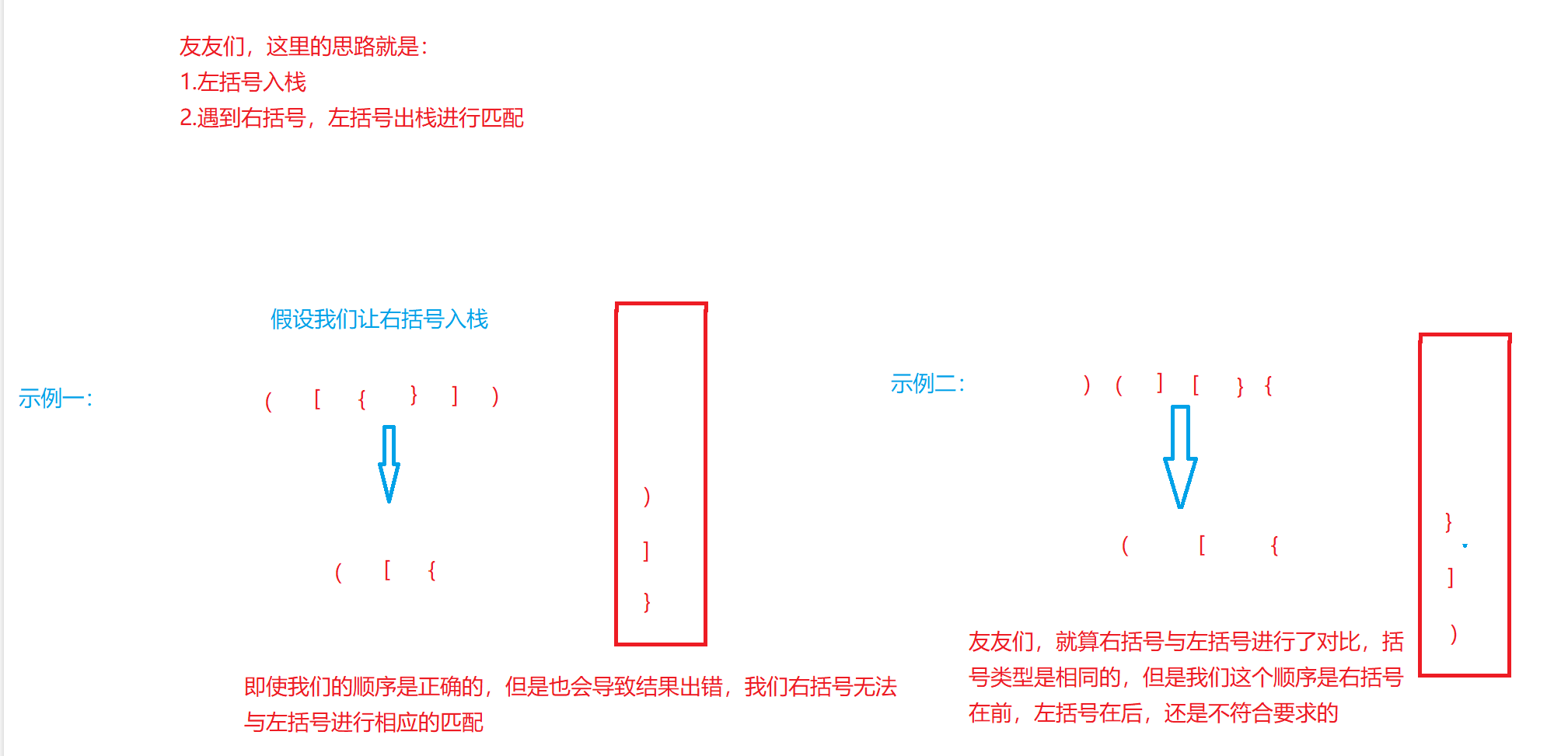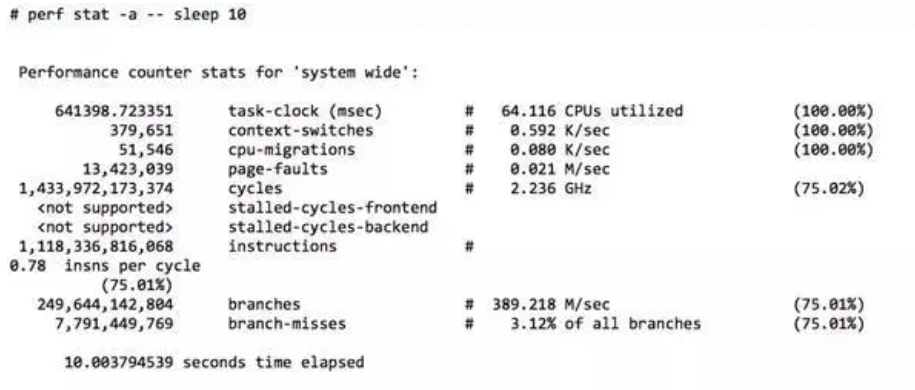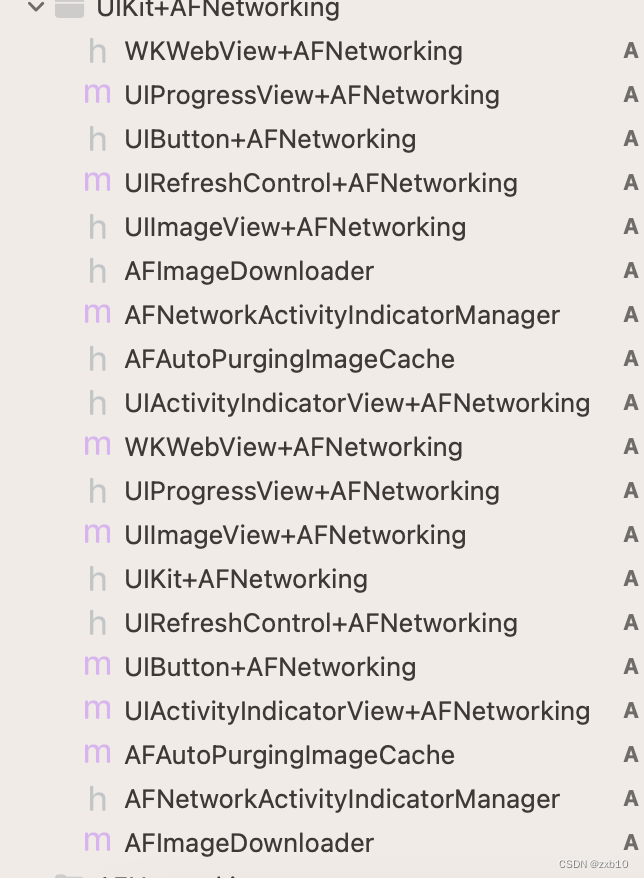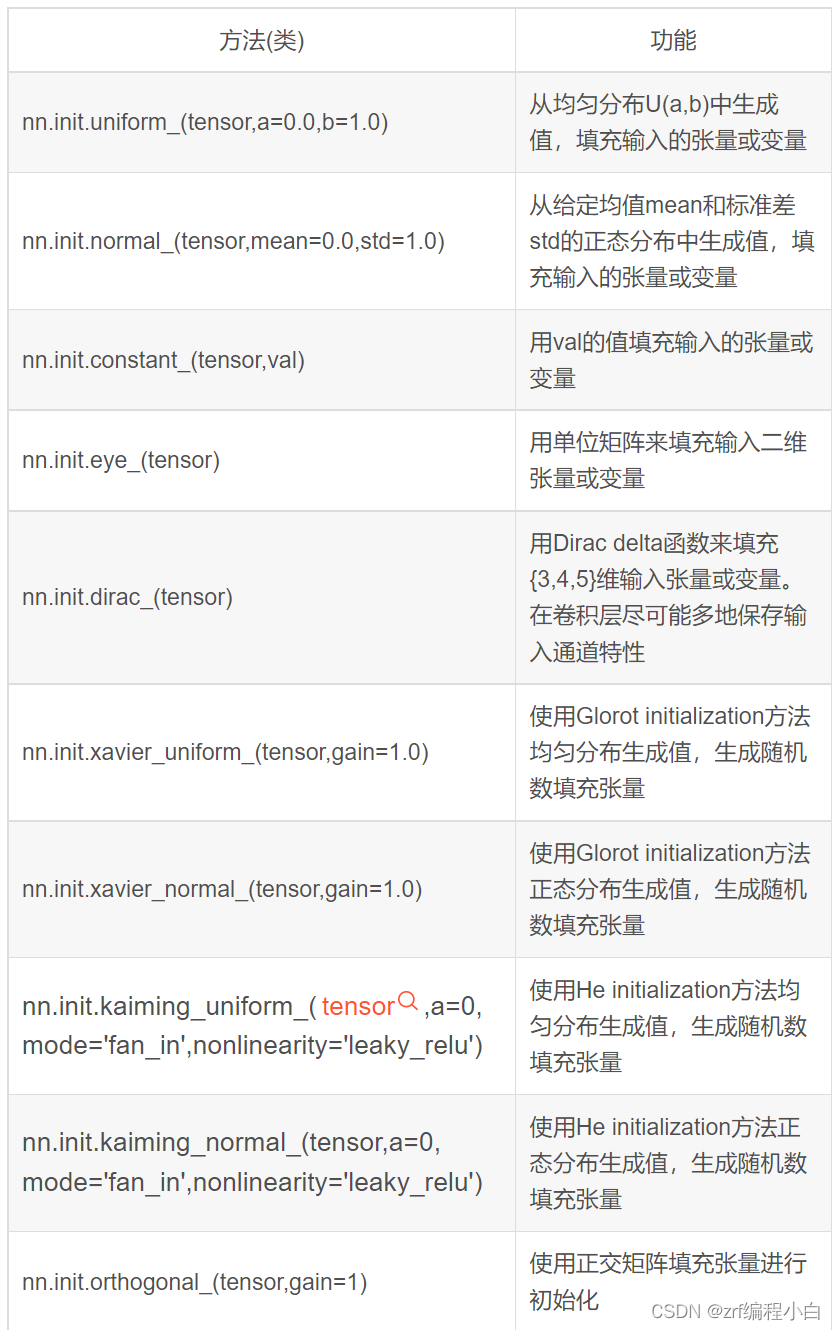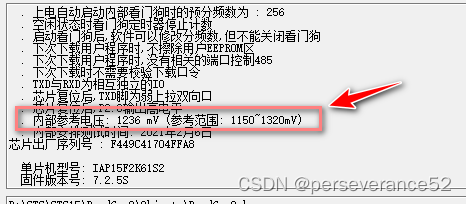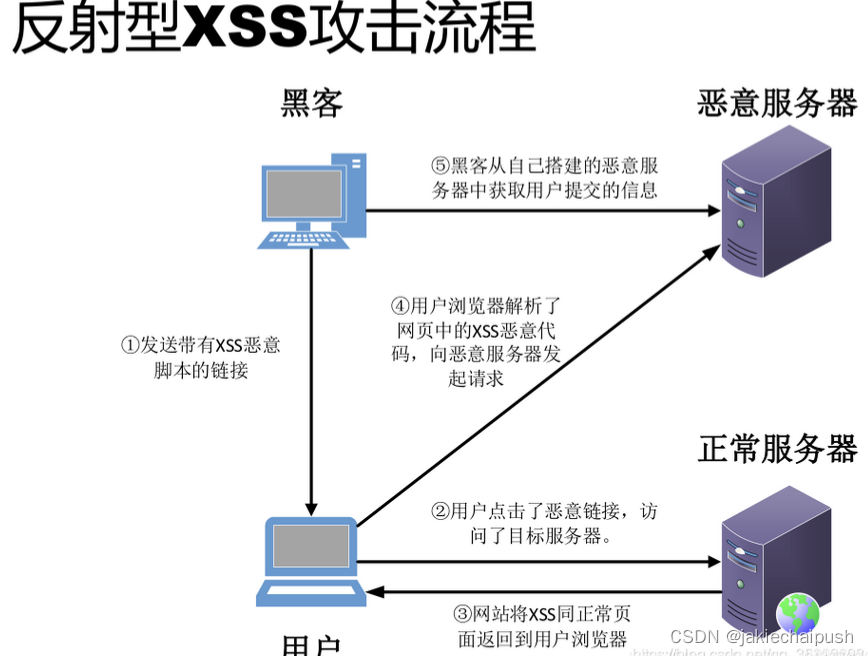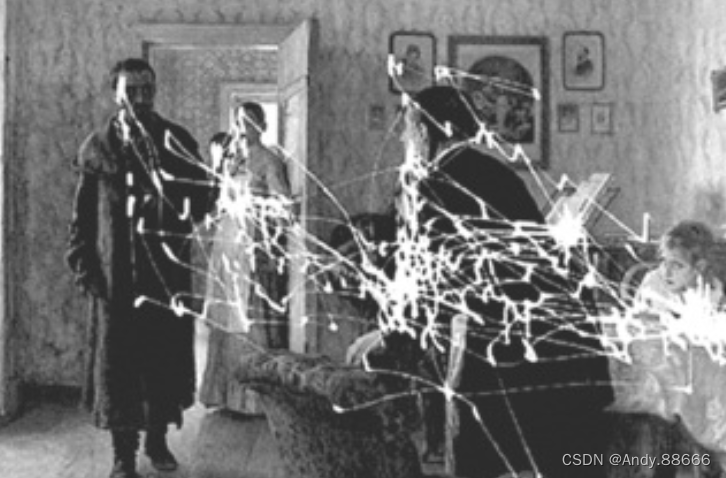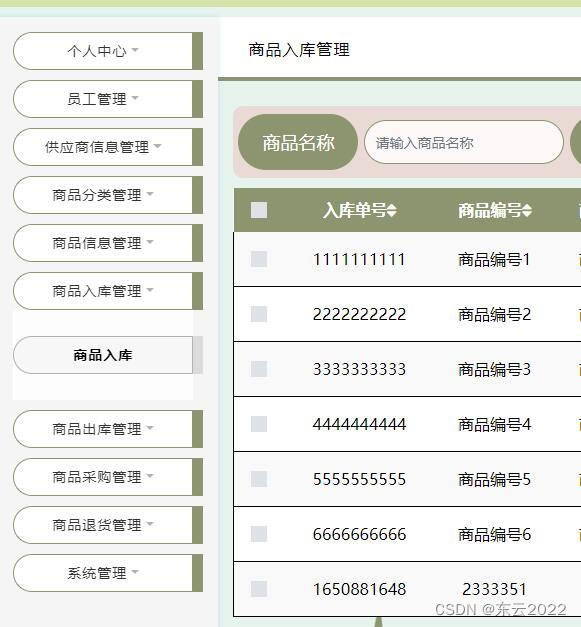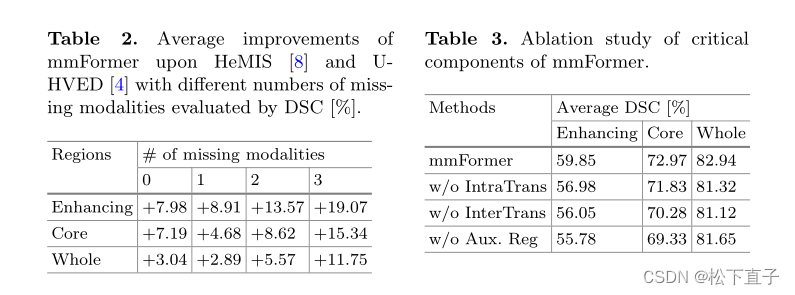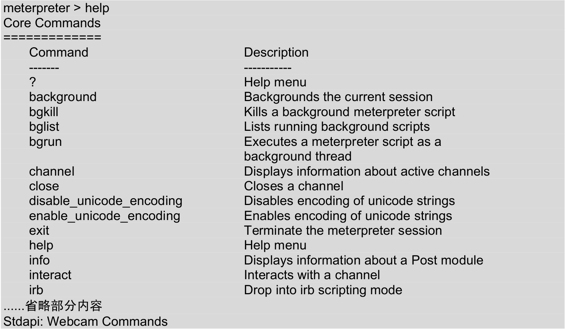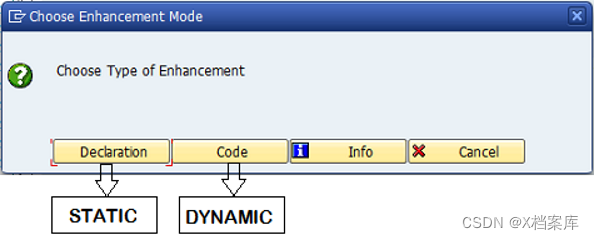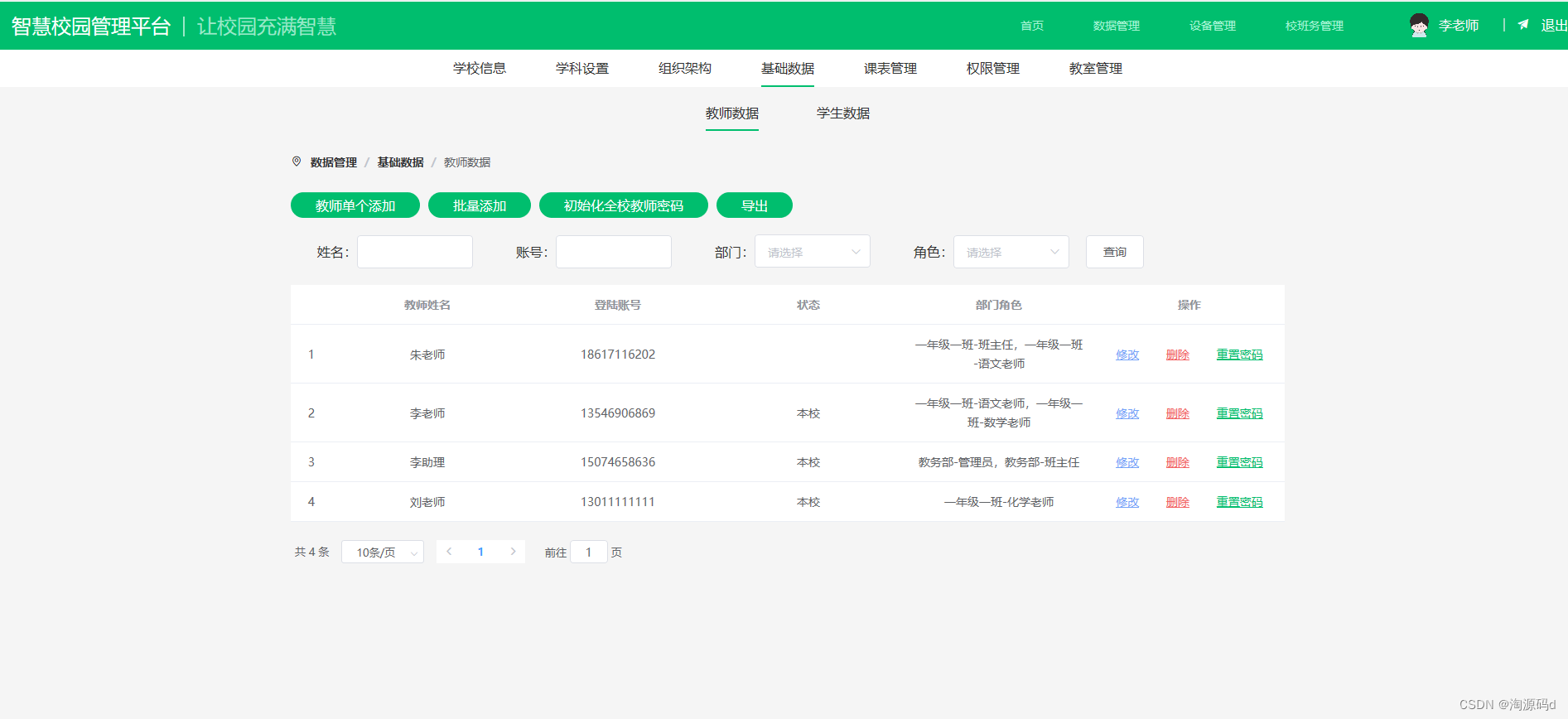🍉博客主页:阿博历练记
📖文章专栏:数据结构与算法
🚍代码仓库:阿博编程日记
🍥欢迎关注:欢迎友友们点赞收藏+关注哦🌹

文章目录
- 🍀前言
- 🏄♂️数组栈
- 🔍1.栈的结构框架
- 🔍2.栈的初始化
- 📢初始化数组指针为空
- 📢top不同的初始化
- 🔍3.栈的释放
- 🔍4.栈的插入数据
- 🔍5.栈的删除数据
- 🔍6.取栈顶元素
- 🔍7.栈的判空
- 🔍8.返回栈空间元素的个数
- 🚣Stack.h代码
- 🏂Stack.c代码
- 🏊♂️Test.c代码
- 🧋代码效果展示
- 🖋题目描述
- 💡逻辑分析
- ❌错误案例1
- ❌错误案例2
- ✔代码纠正
🍀前言
上期阿博给友友们介绍了双链表,下面阿博再来给友友们介绍一种新的数据结构栈.
栈:一种特殊的线性表,其只允许在固定的一端进行插入和删除元素操作。进行数据插入和删除操作的一端称为栈顶,另一端称为栈底。栈中的数据元素遵守后进先出LIFO(Last In FirstOut)的原则。
压栈(进栈/入栈):栈的插入操作。入数据在栈顶.
出栈:栈的删除操作。出数据也在栈顶.
栈的实现一般可以使用数组或者链表实现,相对而言数组的结构实现更优一些。因为数组在尾上插入数据的代价比较小.
🏄♂️数组栈
🔍1.栈的结构框架
typedef struct Stack
{
STDataType* a;
int top; //top指向栈顶的位置
int capacity;
}ST;
友友们注意,这里top是标识栈顶的位置.
🔍2.栈的初始化
void STInit(ST* pst)
{
assert(pst);
pst->a = NULL;
pst->top = 0; //如果我们初始化为0,top就指向栈顶元素的下一个位置,初始化为-1,top就是指向栈顶元素.
pst->capacity = 0;
}
📢初始化数组指针为空
这里有很多友友们可能会有疑问:我们初始化的时候不应该给它在堆区上动态开辟一块空间吗,为什么初始化为空呢?
📢top不同的初始化
1.top初始化为0
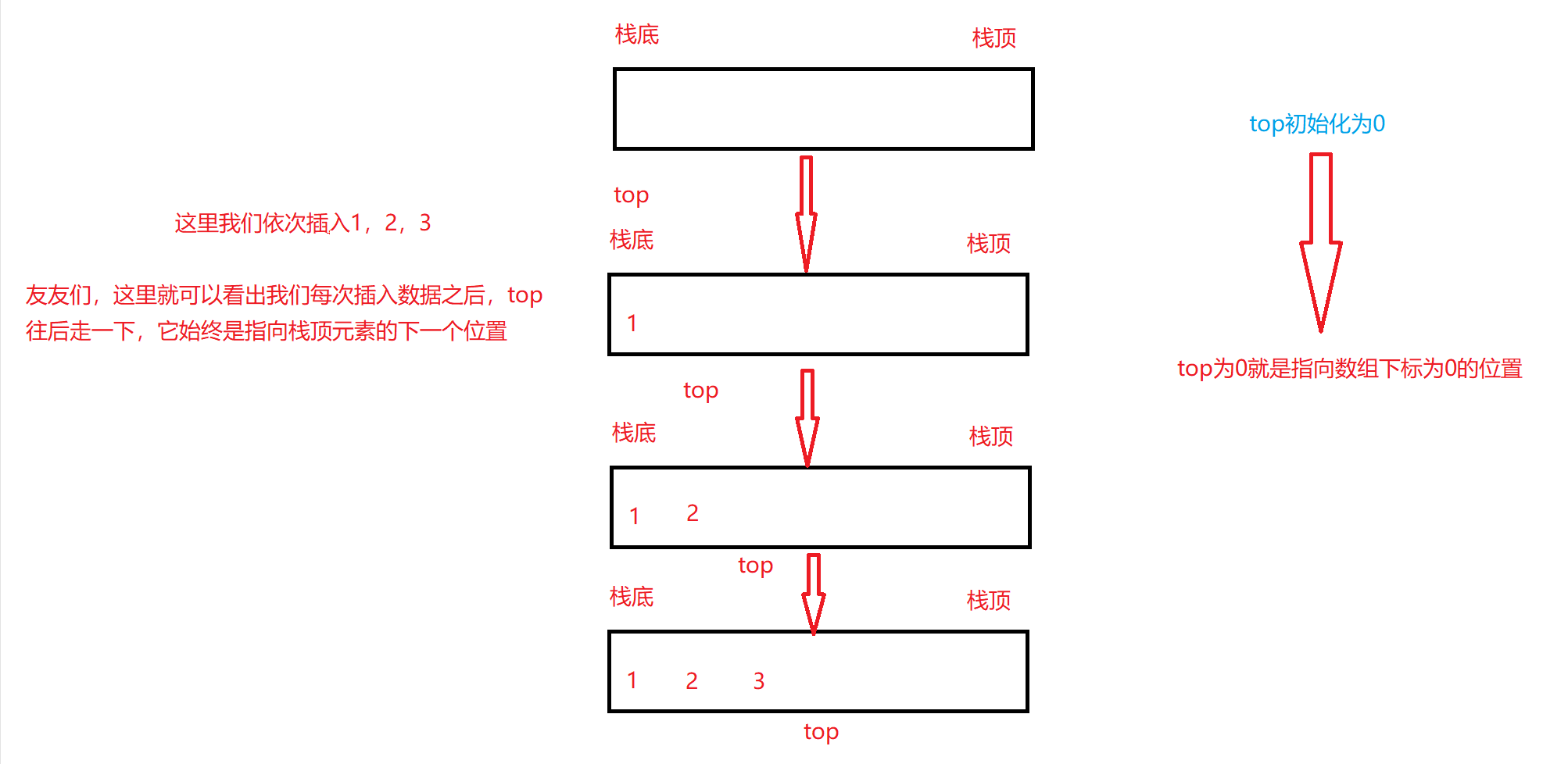
2.top初始化为-1
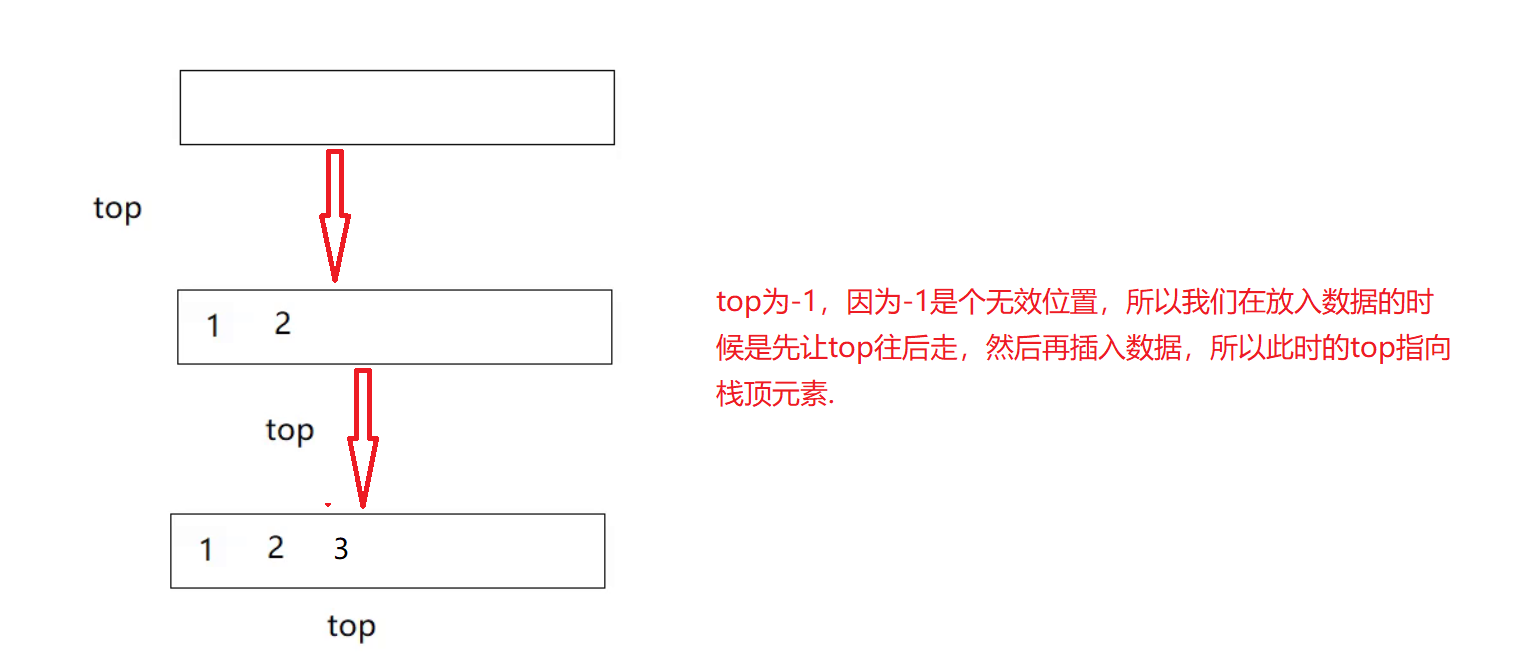
⭐友友们注意了,对应不同的top值,栈的判空条件也是不一样的
1.top初始化为0,判空方式就是top == 0,这种方式是:top指向栈顶元素的下一个位置.
2.top初始化为-1,判空方式是top == -1,这种方式是:top指向栈顶元素的位置.
🔍3.栈的释放
void STDestroy(ST* pst)
{
assert(pst);
free(pst->a);
pst->a = NULL;
pst->capacity = pst->top = 0;
}
🔍4.栈的插入数据
void STPush(ST* pst, STDataType x)
{
assert(pst);
if (pst->top == pst->capacity)
{
int newcapacity = pst->capacity==0 ? 4 : pst->capacity * 2 ;
STDataType* tmp = (STDataType*)realloc(pst->a, newcapacity * sizeof(STDataType));
if (tmp == NULL)
{
perror("realloc fail");
return;
}
pst->a = tmp;
pst->capacity = newcapacity;
}
pst->a[pst->top] = x;
pst->top++;
}
友友们这里一定要注意当我们扩容成功之后,要把新地址传给我们的pst->a指针,如果忘记,那么它还是指向空的,因为我们的top就是指向栈顶元素的下一个位置,所以当我们插入数据的时候,直接就可以把数据放在下标为pst->top的位置上.
🔍5.栈的删除数据
void STPop(ST* pst)
{
assert(pst);
assert(!STEmpty(pst));
pst->top--;
}
这里要注意我们的栈为空之后,即top为0,就不要在减减top了
🔍6.取栈顶元素
STDataType STTop(ST* pst)
{
assert(pst);
assert(!STEmpty(pst));
return pst->a[pst->top - 1];
}
这里要注意的是我们的top是指向栈顶元素的下一个位置,所以当我们要取栈顶元素的时候,我们要让top减1,如果栈为空,就不要再取了,因为如果空栈,pst->top-1就变成-1了,就会出现
越界访问.一定要注意越界在不同的编译器上它们的处理是不一样的,因为它们的版本可能不一样.
🔍7.栈的判空
bool STEmpty(ST* pst)
{
assert(pst);
return pst->top == 0;
}
⛳⛳友友们注意这里不能写成return pst->top,这里我们要理解栈空的概念就是pst->top等于0为真,所以这里我们用一个判断式,如果我们那样写的话,pst->top等于0的话,0就是假,我们就需要反一下,return !pst->top,就是当pst->top为0的时候,取非就为真,但是这样代码的可读性就不是很高了.
🔍8.返回栈空间元素的个数
int STSize(ST* pst)
{
assert(pst);
return pst->top;
}
如果我们把top初始化为
-1,那么这里的size就是top+1.
🚣Stack.h代码
#pragma once
#include<stdio.h>
#include<stdlib.h>
#include<stdbool.h>
#include<assert.h>
typedef int STDataType;
typedef struct Stack
{
STDataType* a;
int top; //top指向栈顶的位置
int capacity;
}ST;
void STInit(ST* pst);
void STDestroy(ST* pst);
void STPush(ST* pst,STDataType x);
STDataType STTop(ST* pst);
void STPop(ST* pst);
bool STEmpty(ST* pst);
int STSize(ST* pst);
🏂Stack.c代码
#define _CRT_SECURE_NO_WARNINGS 1
#include"Stack.h"
void STInit(ST* pst)
{
assert(pst);
pst->a = NULL;
pst->top = 0; //如果我们初始化为0,top就指向栈顶元素的下一个位置,初始化为-1,top就是指向栈顶元素.
pst->capacity = 0;
}
void STDestroy(ST* pst)
{
assert(pst);
free(pst->a);
pst->a = NULL;
pst->capacity = pst->top = 0;
}
void STPush(ST* pst, STDataType x)
{
assert(pst);
if (pst->top == pst->capacity)
{
int newcapacity= pst->capacity==0 ? 4 : pst->capacity * 2 ;
STDataType* tmp = (STDataType*)realloc(pst->a,newcapacity * sizeof(STDataType));
if (tmp == NULL)
{
perror("realloc fail");
return;
}
pst->a = tmp;
pst->capacity = newcapacity;
}
pst->a[pst->top] = x;
pst->top++;
}
STDataType STTop(ST* pst)
{
assert(pst);
assert(!STEmpty(pst));
return pst->a[pst->top - 1];
}
bool STEmpty(ST* pst)
{
assert(pst);
return pst->top == 0;
}
void STPop(ST* pst)
{
assert(pst);
assert(!STEmpty(pst));
pst->top--;
}
int STSize(ST* pst)
{
assert(pst);
return pst->top;
}
🏊♂️Test.c代码
#define _CRT_SECURE_NO_WARNINGS 1
#include"Stack.h"
void TestStack1()
{
ST st;
STInit(&st);
STPush(&st, 1);
STPush(&st, 2);
STPush(&st, 3);
STPush(&st, 4);
while (!STEmpty(&st)) //因为栈是后进先出,所以我们不能随便访问
{
printf("%d ", STTop(&st));
STPop(&st);
}
STDestroy(&st);
}
int main()
{
TestStack1();
return 0;
}
⭐⭐⭐友友们,这里注意一下
因为栈具有后入先出的特性,所以我们在访问的时候,不能随机访问.
🧋代码效果展示

🖋题目描述
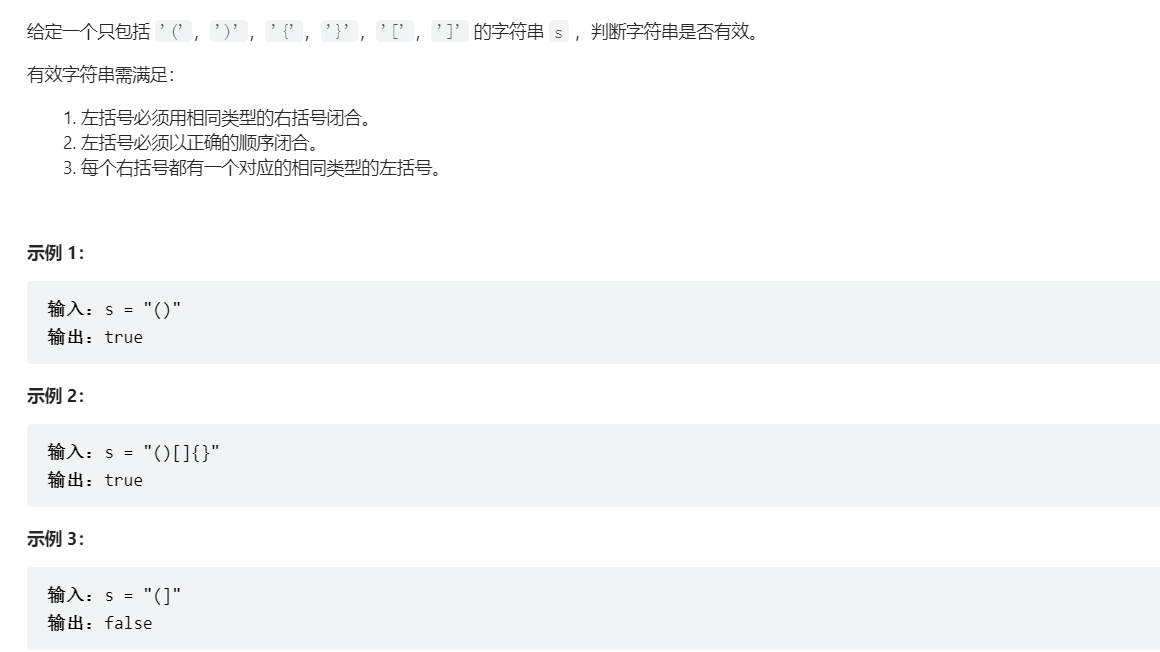
💡逻辑分析
因为题目要保证左括号必须以正确的顺序闭合和每个右括号都有一个相同类型的左括号
❌错误案例1
typedef int STDataType;
typedef struct Stack
{
STDataType* a;
int top; //top指向栈顶的位置
int capacity;
}ST;
void STInit(ST* pst);
void STDestroy(ST* pst);
void STPush(ST* pst,STDataType x);
STDataType STTop(ST* pst);
void STPop(ST* pst);
bool STEmpty(ST* pst);
int STSize(ST* pst);
void STInit(ST* pst)
{
assert(pst);
pst->a = NULL;
pst->top = 0; //如果我们初始化为0,top就指向栈顶元素的下一个位置,初始化为-1,top就是指向栈顶元素.
pst->capacity = 0;
}
void STDestroy(ST* pst)
{
assert(pst);
free(pst->a);
pst->a = NULL;
pst->capacity = pst->top = 0;
}
void STPush(ST* pst, STDataType x)
{
assert(pst);
if (pst->top == pst->capacity)
{
int newcapacity = pst->capacity==0 ? 4 : pst->capacity * 2 ;
STDataType* tmp = (STDataType*)realloc(pst->a, newcapacity * sizeof(STDataType));
if (tmp == NULL)
{
perror("realloc fail");
return;
}
pst->a = tmp;
pst->capacity = newcapacity;
}
pst->a[pst->top] = x;
pst->top++;
}
STDataType STTop(ST* pst)
{
assert(pst);
assert(!STEmpty(pst));
return pst->a[pst->top - 1];
}
bool STEmpty(ST* pst)
{
assert(pst);
return pst->top == 0;
}
void STPop(ST* pst)
{
assert(pst);
assert(!STEmpty(pst));
pst->top--;
}
int STSize(ST* pst)
{
assert(pst);
return pst->top;
}
bool isValid(char * s){
ST q;
STInit(&q);
while(*s)
{
if(*s=='('||*s=='['||*s=='{')
{
STPush(&q,*s);
}
else
{
if(STTop(&q)=='('&&*s!=')'||STTop(&q)=='['&&*s!=']'||STTop(&q)=='{'&&*s!='}')
{
return false;
}
else
{
STPop(&q);
}
}
s++;
}
return true;
}
友友们如果我们这里只输入了’[’,它入栈之后,s++走到\0的位置退出while循环,然后我们直接返回true了,这就会导致结果的错误,所以我们在退出while循环之后,我们需要判断一下栈是否为空,如果不为空,也返回false.
❌错误案例2
typedef int STDataType;
typedef struct Stack
{
STDataType* a;
int top; //top指向栈顶的位置
int capacity;
}ST;
void STInit(ST* pst);
void STDestroy(ST* pst);
void STPush(ST* pst,STDataType x);
STDataType STTop(ST* pst);
void STPop(ST* pst);
bool STEmpty(ST* pst);
int STSize(ST* pst);
void STInit(ST* pst)
{
assert(pst);
pst->a = NULL;
pst->top = 0; //如果我们初始化为0,top就指向栈顶元素的下一个位置,初始化为-1,top就是指向栈顶元素.
pst->capacity = 0;
}
void STDestroy(ST* pst)
{
assert(pst);
free(pst->a);
pst->a = NULL;
pst->capacity = pst->top = 0;
}
void STPush(ST* pst, STDataType x)
{
assert(pst);
if (pst->top == pst->capacity)
{
int newcapacity = pst->capacity==0 ? 4 : pst->capacity * 2 ;
STDataType* tmp = (STDataType*)realloc(pst->a, newcapacity * sizeof(STDataType));
if (tmp == NULL)
{
perror("realloc fail");
return;
}
pst->a = tmp;
pst->capacity = newcapacity;
}
pst->a[pst->top] = x;
pst->top++;
}
STDataType STTop(ST* pst)
{
assert(pst);
assert(!STEmpty(pst));
return pst->a[pst->top - 1];
}
bool STEmpty(ST* pst)
{
assert(pst);
return pst->top == 0;
}
void STPop(ST* pst)
{
assert(pst);
assert(!STEmpty(pst));
pst->top--;
}
int STSize(ST* pst)
{
assert(pst);
return pst->top;
}
bool isValid(char * s){
ST q;
STInit(&q);
while(*s)
{
if(*s=='('||*s=='['||*s=='{')
{
STPush(&q,*s);
}
else
{
if(STTop(&q)=='('&&*s!=')'||STTop(&q)=='['&&*s!=']'||STTop(&q)=='{'&&*s!='}')
{
return false;
}
else
{
STPop(&q);
}
}
s++;
}
if(!STEmpty(&q))
return false;
return true;
}
友友们,如果我们这里只输入了一个‘]’,它既没有入栈,然后它还调用了这个STTop函数,空栈就不能再用这个函数了,所以我们可以判断一下,如果栈为空,第一个肯定是右括号,这样它就不会有对应的左括号与它进行匹配,我们就直接返回false.栈不为空,我们才会进行后续的比较.
✔代码纠正
typedef int STDataType;
typedef struct Stack
{
STDataType* a;
int top; //top指向栈顶的位置
int capacity;
}ST;
void STInit(ST* pst);
void STDestroy(ST* pst);
void STPush(ST* pst,STDataType x);
STDataType STTop(ST* pst);
void STPop(ST* pst);
bool STEmpty(ST* pst);
int STSize(ST* pst);
void STInit(ST* pst)
{
assert(pst);
pst->a = NULL;
pst->top = 0; //如果我们初始化为0,top就指向栈顶元素的下一个位置,初始化为-1,top就是指向栈顶元素.
pst->capacity = 0;
}
void STDestroy(ST* pst)
{
assert(pst);
free(pst->a);
pst->a = NULL;
pst->capacity = pst->top = 0;
}
void STPush(ST* pst, STDataType x)
{
assert(pst);
if (pst->top == pst->capacity)
{
int newcapacity = pst->capacity==0 ? 4 : pst->capacity * 2 ;
STDataType* tmp = (STDataType*)realloc(pst->a, newcapacity * sizeof(STDataType));
if (tmp == NULL)
{
perror("realloc fail");
return;
}
pst->a = tmp;
pst->capacity = newcapacity;
}
pst->a[pst->top] = x;
pst->top++;
}
STDataType STTop(ST* pst)
{
assert(pst);
assert(!STEmpty(pst));
return pst->a[pst->top - 1];
}
bool STEmpty(ST* pst)
{
assert(pst);
return pst->top == 0;
}
void STPop(ST* pst)
{
assert(pst);
assert(!STEmpty(pst));
pst->top--;
}
int STSize(ST* pst)
{
assert(pst);
return pst->top;
}
bool isValid(char * s){
ST q;
STInit(&q);
while(*s)
{
if(*s=='('||*s=='['||*s=='{')
{
STPush(&q,*s);
}
else
{
if(STEmpty(&q))
{
return false;
}
if(STTop(&q)=='('&&*s!=')'||STTop(&q)=='['&&*s!=']'||STTop(&q)=='{'&&*s!='}')
{
return false;
}
else
{
STPop(&q);
}
}
s++;
}
if(!STEmpty(&q))
return false;
return true;
}

